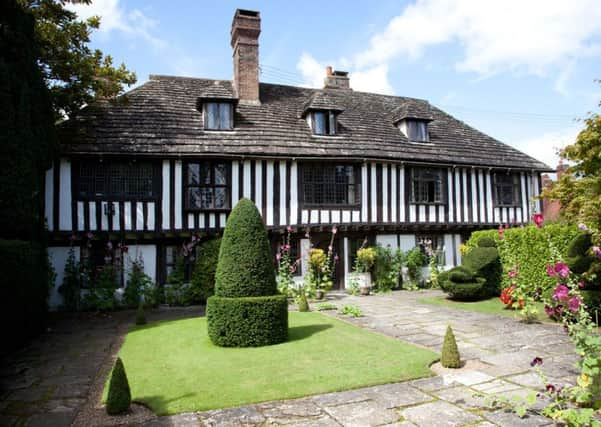View the amazing transformation of the '˜Lost Gardens of Bramber'


At that time the gardens were a picture of dereliction, overgrown with an impenetrable jungle of brambles, nettles and saplings.
On Friday June 24 and Saturday June 25 between 2pm – 5.30pm and in support of the National Gardens Scheme, visitors to St Mary’s will be able to view the beautiful and amazing transformation which has taken place over the last 19 years, thanks to curator Roger Linton’s ingenious designs and the hard work of his enthusiastic team of volunteer gardeners.
Advertisement
Hide AdAdvertisement
Hide AdToday visitors feel as though they have entered another world – not a jungle after all. There is a riot of colour in the magnificent rose garden, planted for the Queen’s Golden Jubilee; a colourful ‘terracotta’ garden; the rare pineapple pits with the restored stove-house; and the magnificent 140 foot (43m) Victorian brick fruit wall.
The Victorian potting shed now houses a rural museum of horticultural implements. The former circular orchard has been transformed into a tranquil poetry garden, with a bust of Byron as its central focus. A recent development is the King’s Garden, centred around a descendant of the original Boscopel oak, in celebration of King Charles II’s escape after the Battle of Worcester. At the end of the woodland walk visitors encounter the new Landscape Waterfall Garden complete with an island and waterfall.
The universal excitement at the discovery of these ‘lost gardens’ can hardly be imagined. Originally laid out in the 1890s as three and a half acres of kitchen and pleasure gardens, the exciting programme of restoration has brought the Lost Gardens of Bramber back to life. An additional feature this year is the newly-restored glasshouse, the only survivor out of five original 19th-century glasshouses, which will be open for plant sales.
Visitors can also enjoy tea and cake in the charming cottage-style tea room or the great charm of the formal gardens surrounding the fine medieval timber-framed house.
Advertisement
Hide AdAdvertisement
Hide AdThere are a number of amusing topiary subjects: a large topiary snail, a spirited topiary bull with flying tail, a bob-tailed hare in box and a bulbous-eyed frog on a lily-pad. There is also a magnificent example of the prehistoric ‘living fossil tree’, ginkgo biloba, and colourful herbaceous borders.
Entrance £5 (children free). Visit www.stmarysbramber.co.uk